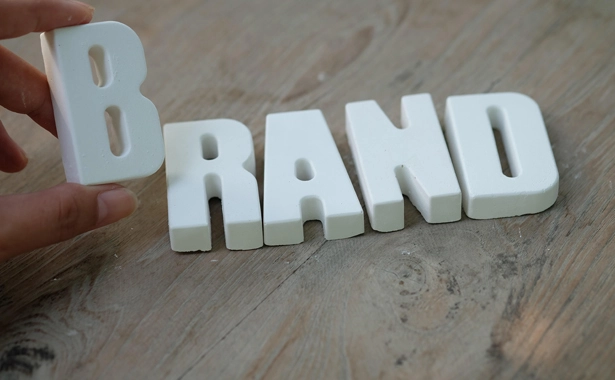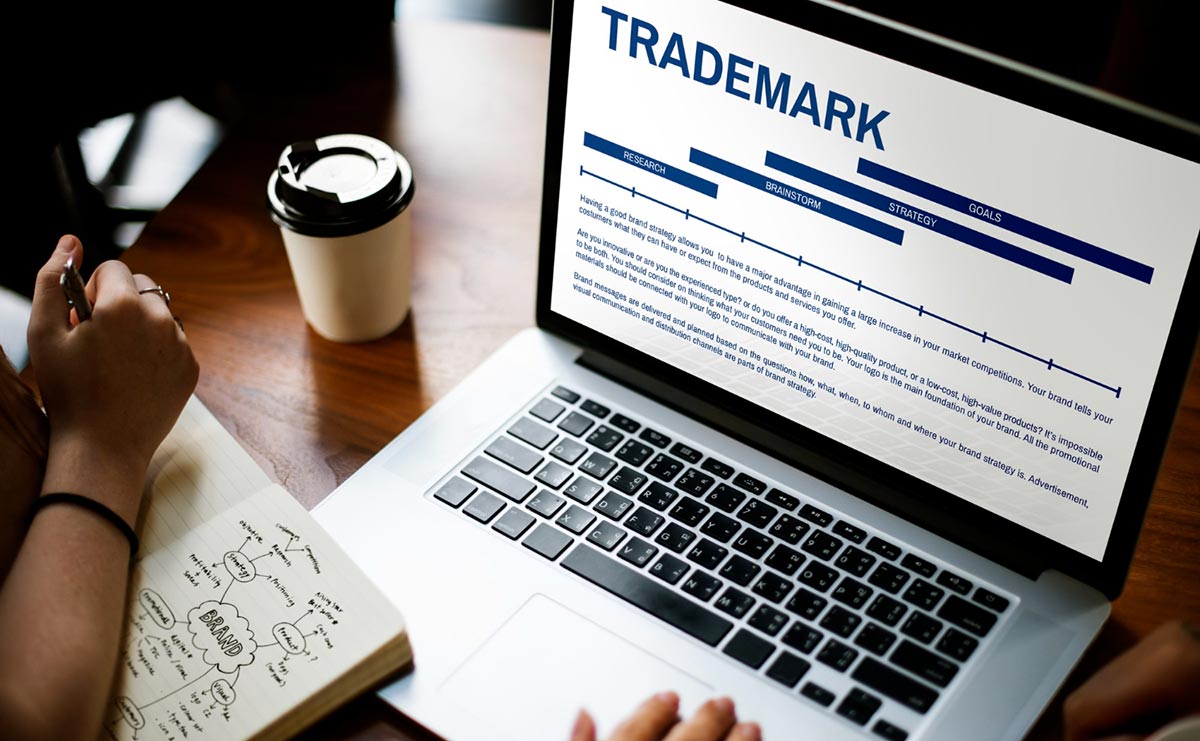Contents
Trademarking your logo is a critical step in protecting your brand identity and ensuring your business stands out in the competitive market. In the United Kingdom, the process of trademarking a logo involves several key steps and legal considerations. This guide aims to provide a clear and concise overview of how to trademark a logo in the UK, covering everything from initial design considerations to the formal registration process. Whether you are a new startup seeking to establish a unique brand presence or an established business looking to safeguard your logo, understanding the trademark process is essential for long-term success and legal protection.
What is a Trademark?
A trademark is a distinctive sign, design, or expression that identifies and distinguishes the goods or services of a particular source from those of others. Trademarks can be names, logos, slogans, or a combination of these elements. When you trademark logo, you gain exclusive rights to use it, helping to protect your brand from unauthorized use by others. The primary purpose of a trademark is to differentiate a company’s products or services from those of its competitors, thereby avoiding consumer confusion and establishing a recognizable brand presence in the market. Trademarks come in various forms to distinguish brands and their products. Word marks consist of words or combinations of words, such as “Nike” or “Apple.” Logos and symbols are graphical representations like the Nike swoosh or Apple logo. Slogans are catchphrases associated with a brand, such as “Just Do It” (Nike) or “I’m Lovin’ It” (McDonald’s). Combination marks merge words and symbols, like the Starbucks logo. Trade dress refers to the unique visual appearance of a product or its packaging, such as the distinctive shape of the Coca-Cola bottle, which signifies the product’s source to consumers.
Why Trademark a Logo?
- Brand Protection: A trademark legally protects your logo, preventing others from using a similar design that could confuse customers.
- Exclusive Rights: You gain the exclusive right to use the logo in connection with the goods or services you offer.
- Brand Value: Trademarks add value to your brand, making it a valuable asset that can be sold or licensed.
- Legal Recourse: It gives you the legal authority to take action against anyone who infringes on your trademark.
Trademarking a logo is a crucial step in building and protecting your brand. It offers legal protection, exclusive rights, and adds significant value to your business. By following the proper steps and ensuring your logo is unique, you can successfully secure a trademark and safeguard your brand’s identity.
Benefits of Trademarking a Logo
Trademarking a logo provides several significant advantages for your business. Here are the key benefits:
- Legal Protection
Trademark registration gives you exclusive legal rights to use your logo. This means you can take legal action against anyone who uses your logo without permission, helping to prevent unauthorized use and protect your brand’s identity.
- Brand Recognition and Trust
A registered trademark enhances your brand’s recognition and trustworthiness. It signals to customers that your business is established and credible, which can attract more clients and foster customer loyalty.
- Nationwide Exclusivity
In the UK, a registered trademark grants you nationwide exclusivity. No other business can use a similar logo for similar goods or services, which helps to avoid confusion among consumers and strengthens your brand’s market position.
- Asset Value
A trademark is a valuable intangible asset. It can increase the overall value of your business, making it more attractive to investors or potential buyers. Trademarks can also be sold, licensed, or used as security for loans.
- Deterrence Against Infringement
The mere existence of a registered trademark can deter others from attempting to use or copy your logo. Knowing that you have legal rights and are prepared to enforce them can discourage potential infringers.
- Easy Expansion
A registered trademark simplifies the process of expanding your business into new markets, including internationally. It provides a solid foundation for protecting your brand as you enter new regions and helps in registering your trademark in other countries.
- Enhanced Business Reputation
Having a registered trademark can enhance your business reputation. It demonstrates that you are serious about protecting your brand, which can positively influence customers’ perceptions and differentiate your business from competitors.
- Marketing and Branding Advantage
A trademarked logo becomes a powerful marketing tool. It helps create a strong, recognizable brand image, which is crucial for effective marketing and advertising campaigns. A consistent and protected logo aids in building brand loyalty and long-term customer relationships.
- Support for Online Presence
In the digital age, protecting your brand online is crucial. A registered trademark helps you combat cybersquatting and domain name disputes, ensuring your brand is protected across various online platforms and social media channels.
- Long-term Protection
Once registered, a trademark provides long-term protection. In the UK, a trademark registration lasts for ten years and can be renewed indefinitely, providing enduring protection for your brand’s identity.
Trademarking a logo offers substantial benefits, from legal protection and market exclusivity to enhanced brand recognition and value. It is a strategic investment in your business’s future, ensuring that your brand remains protected and distinct in a competitive market.
How to Trademark a Logo in the UK?
Trademarking your logo in the UK is a strategic step to protect your brand’s identity and ensure its exclusive use. Here is a step-by-step guide to help you navigate the process:
- Conduct a Trademark Search
Before applying for a trademark, it’s essential to ensure your logo is unique and not similar to existing trademarks. Conduct a comprehensive search using the UK Intellectual Property Office (IPO) database. This helps to avoid potential conflicts and rejections.
- Prepare Your Logo
Your logo should be distinctive and clearly represent your brand. Ensure it’s professionally designed, clear, and scalable for various uses. It should not be generic, descriptive, or similar to existing trademarks.
- Choose the Right Class
Trademarks are registered in specific classes that represent different goods and services. Identify the appropriate class or classes that best describe the products or services associated with your logo. You can find the classification system on the IPO website.
- File a Trademark Application
Submit your application to the UK Intellectual Property Office (IPO). You can file your application online through the IPO website. The application will require:
- Your Details: Name, address, and contact information.
- Representation of the Logo: A clear image of your logo.
- Description of Goods/Services: Specify the goods or services your logo will represent.
- Application Fee: Pay the required fee, which varies depending on the number of classes and other factors.
- Examination by the IPO
Once submitted, the IPO will examine your application to ensure it meets all legal requirements. This includes checking for similarities with existing trademarks and ensuring the logo is not misleading or offensive. The examination process usually takes a few weeks.
- Publication for Opposition
If the IPO approves your application, it will be published in the Trade Marks Journal. This publication period lasts for two months, during which third parties can oppose your trademark if they believe it infringes on their rights. If no opposition is filed, or if any opposition is resolved in your favor, the registration process continues.
- Registration and Certificate
If there are no objections or once any objections are resolved, the IPO will register your logo as a trademark. You will receive a certificate of registration, which officially grants you exclusive rights to your logo for ten years.
- Use and Maintain Your Trademark
To retain your trademark rights, you must actively use your logo in commerce. Regularly monitor the market for potential infringements and take action if necessary. Trademarks must be renewed every ten years to maintain protection.
Make sure your logo is unique and not similar to existing trademarks. It is wise to consult a trademark attorney to navigate the process and avoid common pitfalls. Apply for your trademark promptly once your logo is finalized to prevent potential conflicts.
How to Determine Your Logo Meets Trademark Registration Requirements
To determine if your logo meets trademark registration requirements, follow these steps:
- Distinctiveness: Ensure your logo is distinctive and not generic or descriptive. Logos that are unique and creative are more likely to be registered.
- Similarity to Existing Trademarks: Conduct a thorough search to ensure your logo does not closely resemble existing trademarks. Use databases like the USPTO’s Trademark Electronic Search System (TESS) in the U.S. or similar databases in other countries.
- Non-offensive Content: Verify that your logo does not contain offensive, obscene, or scandalous material, which could lead to rejection.
- Avoid Common Symbols and Designs: Steer clear of using common symbols, shapes, or designs that are widely used in your industry, as these might be considered non-distinctive.
- Check for Prior Use: Ensure that your logo does not infringe on any existing unregistered trademarks that may have common law rights.
- Goods and Services Classification: Properly classify the goods or services associated with your logo. Each class may require a separate application.
- Legal Compliance: Make sure your logo complies with all relevant legal requirements in your jurisdiction, including any specific industry regulations.
- Consult a Trademark Attorney: Consider consulting a trademark attorney to help you navigate the registration process and ensure all requirements are met.
By following these steps, you can increase the likelihood that your logo will meet trademark registration requirements.
What is the Duration for Trademarking a Logo in the UK?
The process of trademarking a logo in the UK typically takes around 3 to 4 months, provided there are no objections or opposition. Here is a breakdown of the timeline:
Application Submission: Once you submit your application online through the UK Intellectual Property Office (IPO) website, you will receive an acknowledgment of receipt. This step happens immediately and confirms that your application has been received and is in the queue for examination.
Examination Phase: During this phase, which takes approximately 2 to 4 weeks, the IPO examines your application to ensure it meets all the necessary requirements and checks for any conflicts with existing trademarks. If any issues are found, they will issue an examination report outlining the concerns that need to be addressed.
Publication for Opposition: If your application passes the examination phase, it will be published in the Trade Marks Journal. This publication period lasts for 2 months, during which third parties can oppose your application if they believe it infringes on their existing trademark rights. This stage is crucial as it allows for public scrutiny and the opportunity for objections.
Opposition Handling (if applicable): If an opposition is filed, the process can be significantly longer. The time taken to resolve an opposition varies as it involves legal proceedings and potential negotiations. The duration depends on the complexity of the opposition and how quickly a resolution is reached.
Registration: If there are no oppositions, or if any oppositions are resolved in your favor, your trademark will proceed to registration. This final step can take from immediately to a few weeks after the opposition period ends or the resolution of any disputes. The IPO will then issue a registration certificate, and your trademark will be officially registered.
In summary, the entire process, from submission to registration, typically takes around 3 to 4 months if there are no complications. However, if opposition or other issues arise, it can extend the timeline considerably.
What Happens if Your Logo Trademark Is Denied?
If your logo trademark application is denied, it’s important to understand the implications and the steps you can take to address the denial. Here is a detailed look at what happens and how you can respond:
- Receive the Denial Notice
The UK Intellectual Property Office (UKIPO) will send you an official notice outlining the reasons for the denial of your trademark application. This notice will provide specific details about why your logo did not meet the trademark requirements.
- Understand the Reasons for Denial
Common reasons for trademark denial include:
- Similarity to Existing Trademarks: Your logo is too similar to an already registered trademark, leading to potential confusion among consumers.
- Lack of Distinctiveness: Your logo is considered too generic, descriptive, or lacks distinctive character.
- Deceptive or Offensive Content: Your logo contains elements that are deemed misleading, deceptive, or offensive.
- Non-Compliance with Formal Requirements: Your application did not meet the necessary formalities or included incorrect information.
- Evaluate Your Options
Once you understand the reasons for the denial, you have several options to consider:
- File an Appeal
- Notice of Appeal: You can file a notice of appeal with the UKIPO, typically within two months of receiving the denial notice.
- Grounds for Appeal: Prepare a detailed statement outlining why you believe the decision was incorrect and present any new evidence or arguments.
- Hearing: In some cases, a hearing may be scheduled where you can present your case before a tribunal.
- Amend Your Application
- Modify Your Logo: If the denial was due to similarity or lack of distinctiveness, consider redesigning your logo to make it more unique.
- Adjust the Description: Refine the description of goods and services associated with your logo to address any issues raised.
- Provide Additional Evidence
- Acquired Distinctiveness: Submit evidence that your logo has gained distinctiveness through extensive use in commerce, such as customer testimonials, sales data, and advertising materials.
- Negotiate with Third Parties
- Consent or Coexistence Agreements: If the denial was due to a conflict with an existing trademark, you might negotiate with the trademark owner for a consent agreement or coexistence agreement, allowing both trademarks to coexist peacefully.
- Rebrand
- New Trademark Application: If redesigning your logo or appealing the decision is not feasible, consider creating a new logo and filing a new trademark application.
- Respond Within the Deadline
Ensure that you respond to the denial notice within the specified timeframe, typically two months. Missing the deadline can result in your application being permanently closed without further recourse.
- Seek Professional Assistance
Consider consulting a trademark attorney who can provide expert advice, help you understand the denial reasons, and guide you through the appeal or amendment process. An attorney can also assist in negotiating agreements with other trademark owners.
Overall, a trademark denial is not the end of the road. By understanding the reasons for the denial, evaluating your options, and taking appropriate action, you can address the issues and improve your chances of securing trademark protection for your logo. Whether through appeal, amendment, or rebranding, there are various paths to achieving successful trademark registration.
Is It Possible to Copyright a Logo?
Yes, a logo can be copyrighted, but it is important to understand the nuances between copyright and trademark protection. Copyright law protects original works of authorship, including artistic works like logos, as long as they meet certain criteria. Here are the key points to consider:
Copyright Protection: A logo is eligible for copyright protection if it is an original, creative work that exhibits some degree of artistic expression. This means that simple logos made up of basic shapes or mere typographic variations may not qualify for copyright protection. However, logos that contain unique designs, artwork, or distinctive elements are likely to be protected under copyright law.
Automatic Protection: In many jurisdictions, including the UK, copyright protection is automatic upon the creation of the work. This means that as soon as you create your logo and it meets the originality requirement, it is protected by copyright without the need for formal registration. However, registering your copyright can provide additional legal benefits, such as evidence of ownership in the event of a dispute.
Scope of Protection: Copyright protects the specific artistic expression of your logo, preventing others from copying or using it without permission. However, it does not protect the logo’s use in commerce or prevent others from using similar logos in a way that might confuse consumers. This is where trademark protection becomes crucial.
Trademark Protection: While copyright protects the artistic aspects of a logo, trademark protection safeguards its use as a brand identifier in the marketplace. Registering your logo as a trademark provides exclusive rights to use it in connection with your goods or services, helping to prevent consumer confusion and unauthorized use by competitors.
Dual Protection: For comprehensive protection, it is advisable to secure both copyright and trademark protection for your logo. Copyright will protect the creative design, while trademark registration will protect its use in commerce, ensuring full legal coverage for your brand identity.
In summary, a logo can indeed be copyrighted if it meets the originality requirement, providing protection for its artistic elements. For complete protection of your brand identity, consider also registering your logo as a trademark.
Conclusion
Trademarking your logo is a crucial step in safeguarding your brand identity and ensuring its exclusive use in the competitive market. By following the outlined steps, including conducting a thorough trademark search, preparing a distinctive logo, choosing the right class, and filing a trademark application with the UK Intellectual Property Office, you can secure legal protection and enhance your brand’s value. Trademark registration offers numerous benefits such as legal recourse, nationwide exclusivity, and increased brand recognition. It also deters infringement and supports business expansion. In the event of a denial, understanding the reasons and evaluating your options—such as filing an appeal or amending your application—can help you address issues and achieve successful registration. Additionally, combining trademark and copyright protection provides comprehensive legal coverage, ensuring that both the artistic elements and commercial use of your logo are protected. By securing a trademark, you invest in the long-term success and integrity of your brand.
Disclaimer: The content provided on this blog is for informational purposes only and does not constitute legal, financial, or professional advice.







